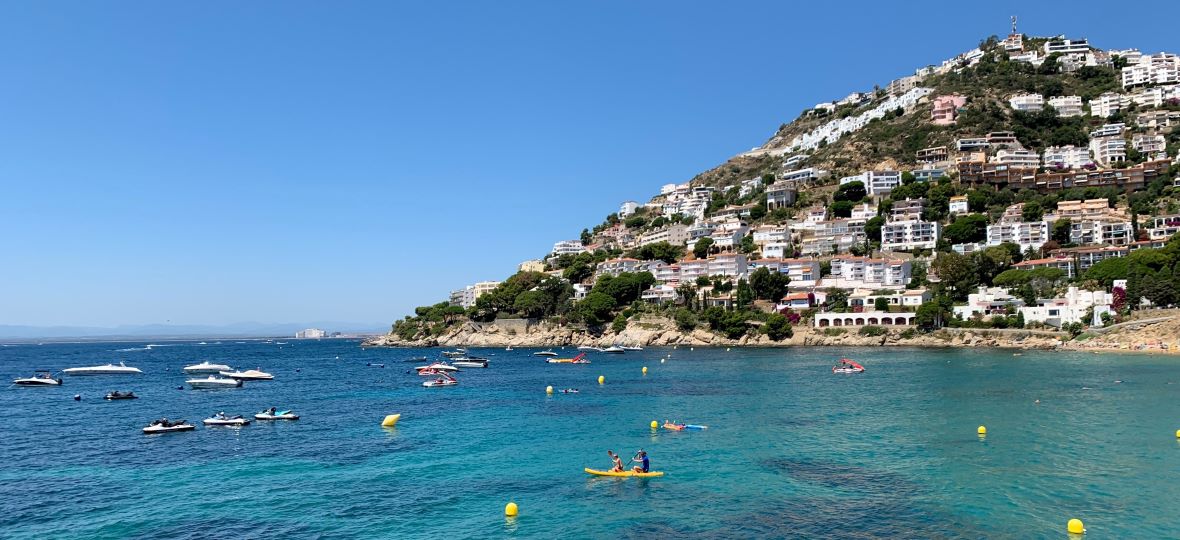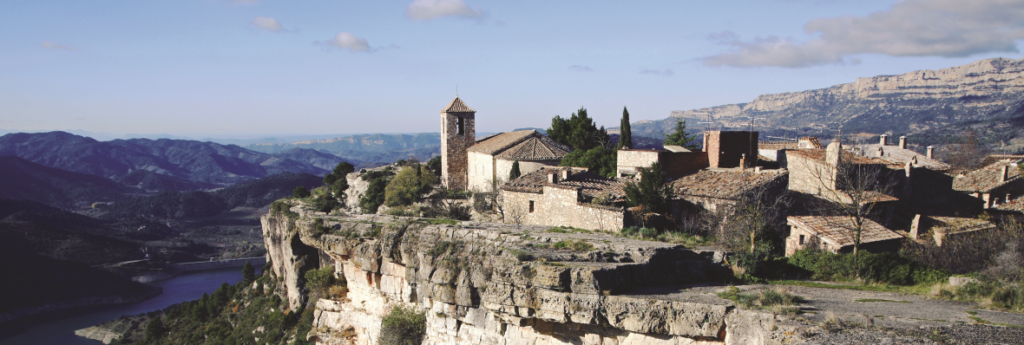Where to travel? The mountains or the sea, or maybe a great urban environment – it’s an age-old traveller’s dilemma. And one that Catalonia easily solves. The northeastern region of Spain allows visitors to dip their toes in the Mediterranean, breathe the fresh air and tread the cobblestone lanes of mountaintop villages in the Pyrenees, and experience the culture of cosmopolitan Barcelona – all at the same time.
Independently spirited, the ancient principality and current “non-independent country” within Spain is bordered by France and Andorra and the Pyrenees mountain range, while the beaches of the Costa Brava and Mediterranean coastline provide breathing space from the bustling capital Barcelona – palette of the legendary Catalonian architect Antoni Gaudi – in the east. West and south stretch the rest of Spain and the Iberian Peninsula.
The Catalan language is still spoken alongside Spanish and symbolizes the region’s independent spirit (and occasional political aspirations) and the prevailing religion is Barcelona FC, arguably the world’s greatest soccer team despite its current travails.
Here’s a closer look at just a few of Catalonia’s many charms:
El Priorat & the South
A landscape of vineyards and hilltop villages in the far southwest of Catalonia, the red earth region is set against the Prades Mountains and home to its mythical towns such as Siurana (banner photo), hiking trails along the Montsant chain, and populated by small wine producers always willing to offer a walk through their estates.
Not far away, visitors can cool off on the beaches of the Costa Brava;, check out Reus, birthplace of Gaudí; or have an aperitif in the Roman city of Tarragona.
Barcelona, the Big City

Colourful Barcelona, the regional capital, boasts a historic Gothic Quarter, La Rambla pedestrian mall, museums, and several beaches. A must-see is the modern (some might say bizarre) modern art and architecture of Antoni Gaudí, best discovered at the Sagrada Família Basilica and in the colourful outdoor mosaics of Park Güell.
The city’s markets are similarly a treat for the senses, and evenings bring great food (paella!), local wines and world-class nightlife. Barcelona FC’s home, the Camp Nou, is a global shrine of soccer.
Less than an hour from Barcelona, is Montseny Natural Park, aUNESCO-designated biosphere reserve ideal for hiking and sightseeing.
The Pyrenees
Extending for more than 400 km through Catalonia, the mountain range boasts over 200 peaks and foothills, numerous lakes and rivers, and “many, many” villages that cling to a traditional way of life. Here some highlights (west to east):
• The charming villages of the Val d’Aran dot the high-altitude region: Arties, Bagergue, Bossòst, Vielha and Vilamòs.
• Culture, nature and good gastronomy highlight The Vall de Boi, which boasts Romanesque churches classified by UNESCO and walks through the Aigüestortes National Park and its 200 altitude lakes.
• Suitable for climbing or simply admiring, Cadi-Moixeró is dubbed the mythical mountain of the Catalans. Further north is the Cerdanya valley and its charming little villages.
• The Garrotxa volcanoes and the Camprodon valley with the town of Dalí make an ideal family destination. More amazing villages: Camprodon, Besalu and Castellfollit de la Roca, Beget and Rupit. The beaches of the Costa Brava less than an hour away.
Costa Brava & the Mediterranean Coast
Costa Brava, or “the wild coast,” comprises the northeast corner of Spain, abutting the French border along the Mediterranean coast, about 60 km northeast of Barcelona. Beyond sandy beaches and rocky coves, mountain scenery and tranquil villages, the tourist playground offers golf and other outdoor activity options, wellness facilities, unique gastronomy, and its own wine route. Winters are mild, making the region a year-round playground.


